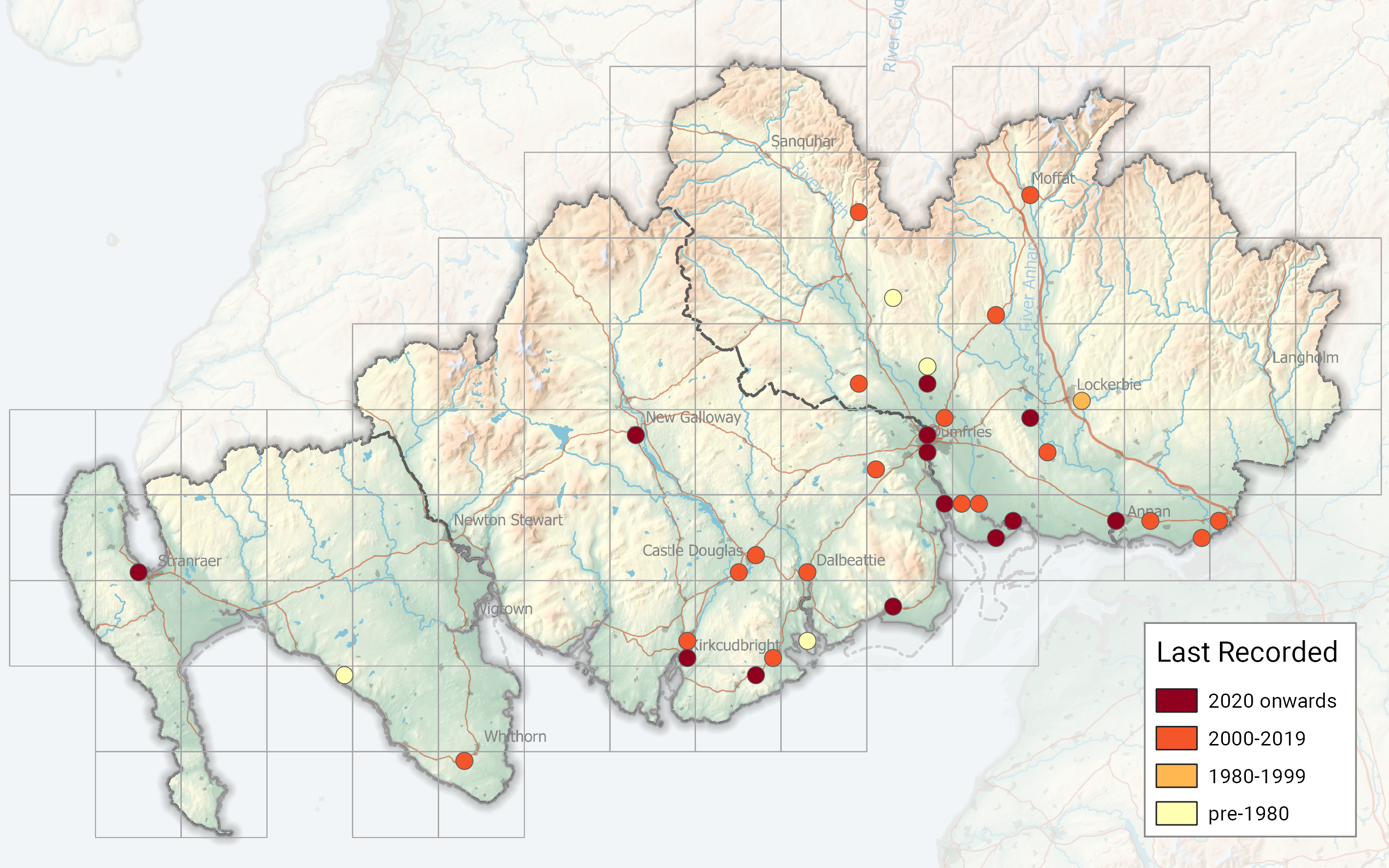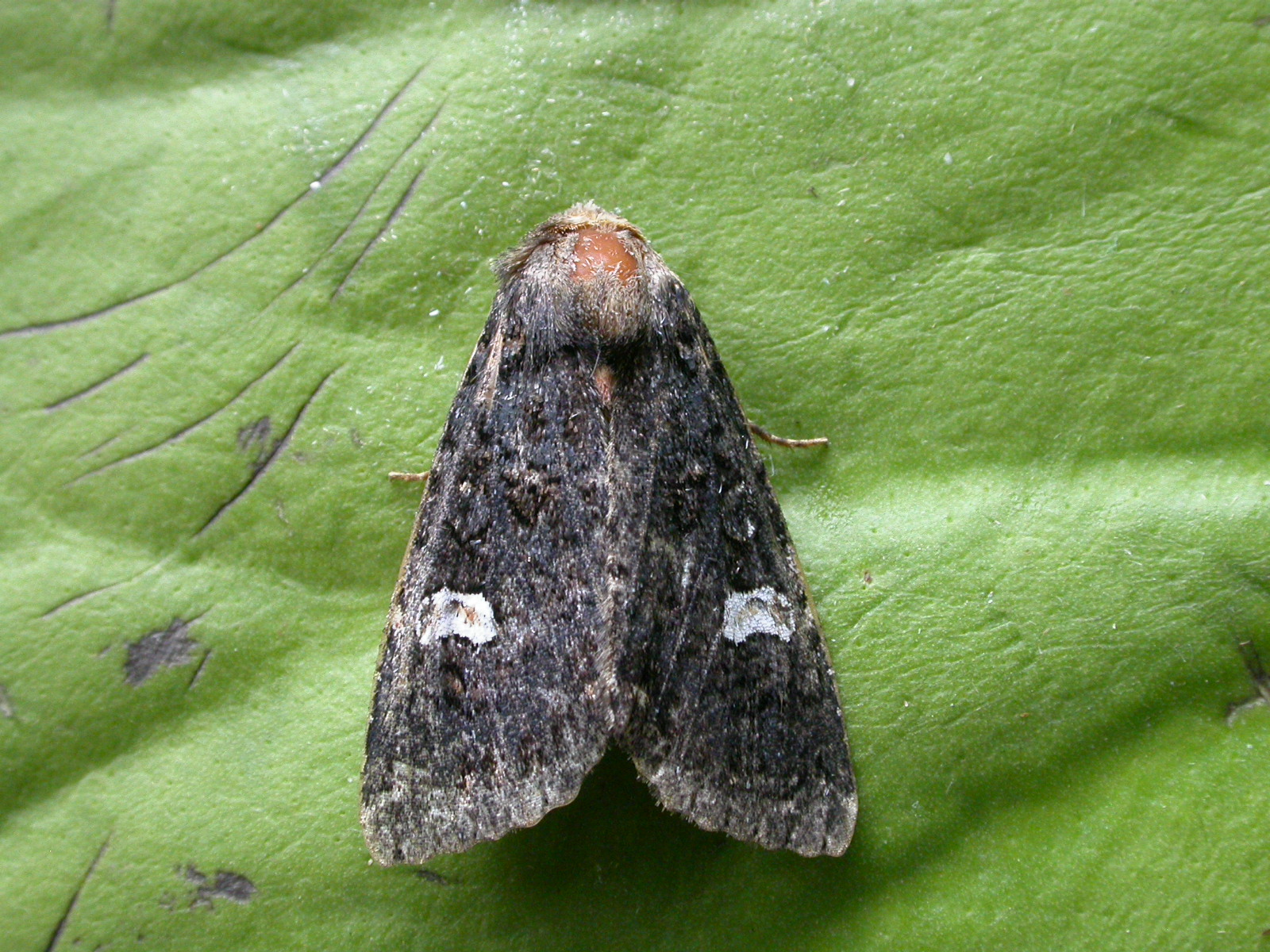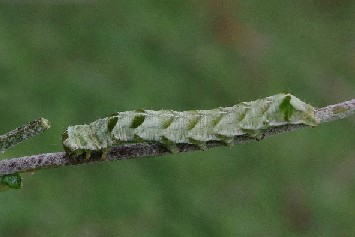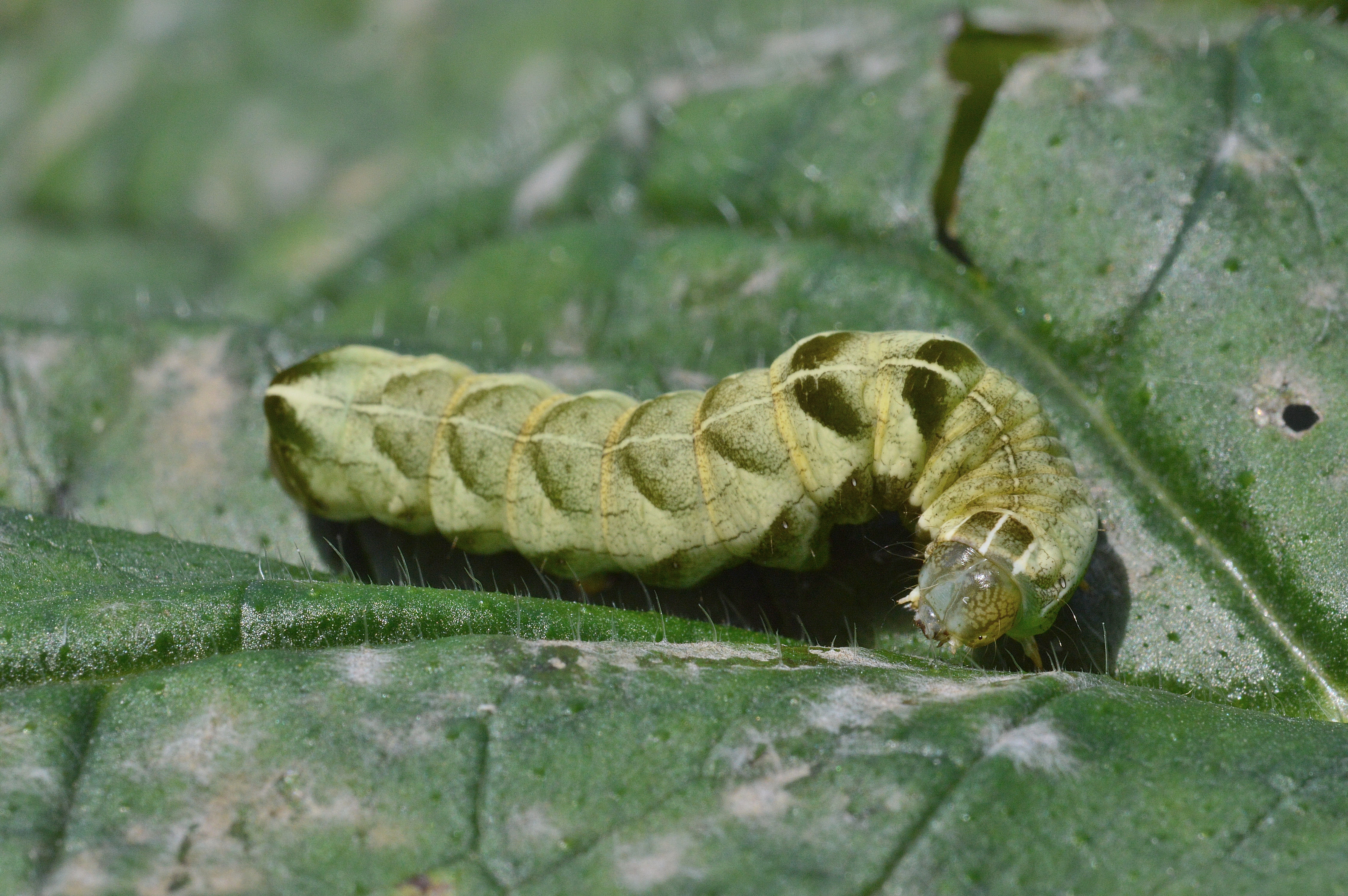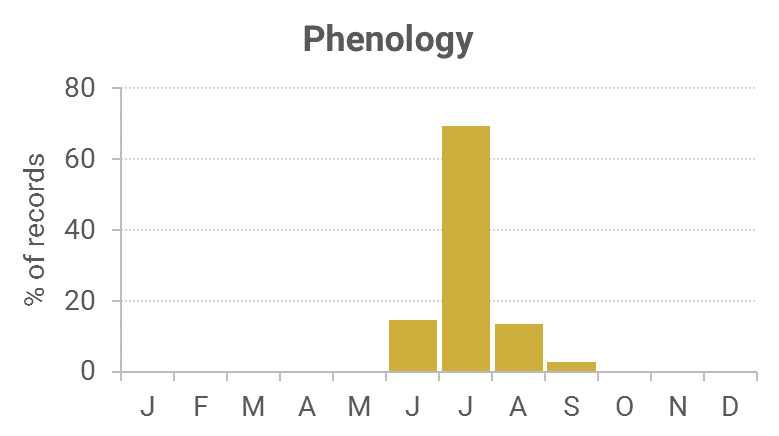Identification
Unmistakable.
Recording Method.
Attracted to light, also comes to sugar and flowers.
Life cycle
One generation. Overwinters as a pupa in a cocoon underground. Larvae present August to October, feeding by day and night on the foodplant.
Larval foodplants
A wide variety, including Common Nettle, Broad-leaved Dock, Groundsel, White Clover, Field Bindweed, Black Currant, Hazeel, Elder and Ivy.
Habitat
A wide range of open and wooded habitats.
History
Barrett (vol. iv) states that it was recorded with doubt by Buchanan-White for Solway, Tweed and Clyde, while South doubted its occurrence in Scotland. But, Douglas Robinson (1870-71) had found it common in July on Almorness (VC73) which is additional to MOGBI. J. Garraway informed Gordon (1913) that he took one from a window on Alticry Lodge in 1903 which is also additional to MOGBI but for VC74.
Cunningham (1947) in the Transactions stated that he had bred a male on from a larva taken by his wife in September, 1946, at Closeburn (VC72). There follows a number of sketchy records for the Lockerbie area in every year between 1977-80. Next record was from Kirkton in 1993 where it has been almost annual since, with further records through the 1990s into the 21st century from Mersehead RSPB, Castle Douglas, Low Boreland, Dalbeattie, Lochfoot (all VC73), Glencaple and Moffat (VC72).

